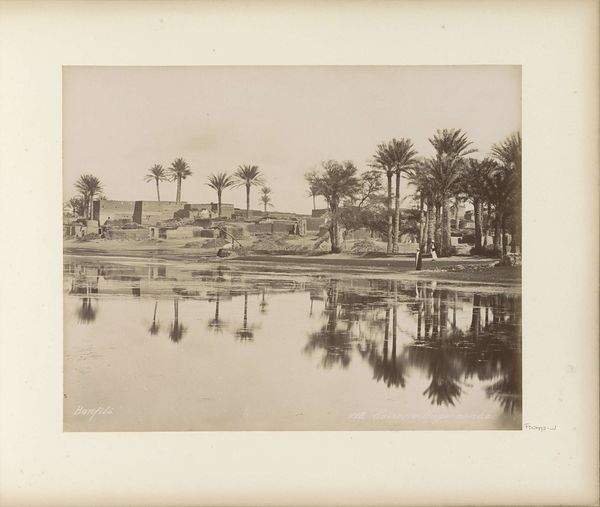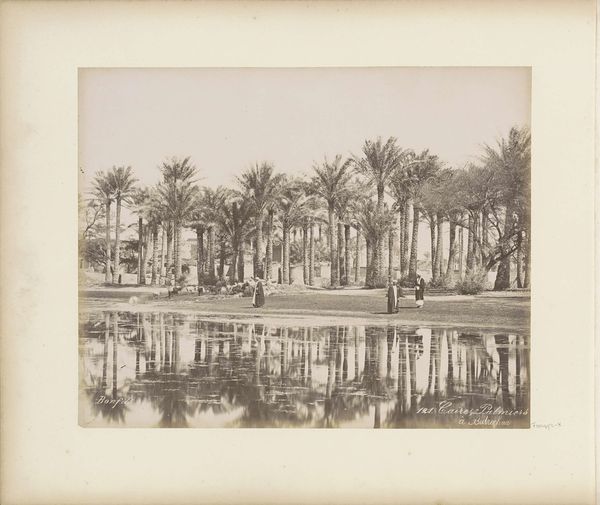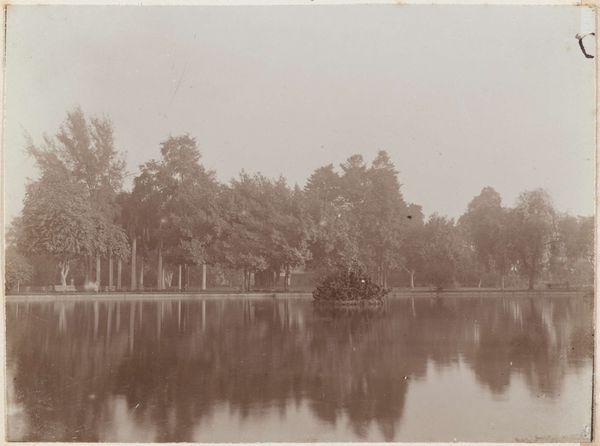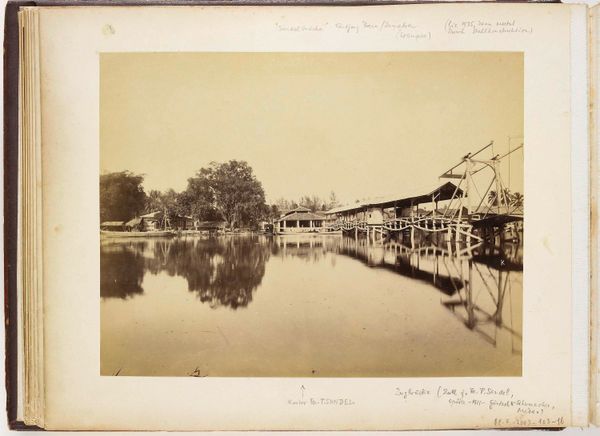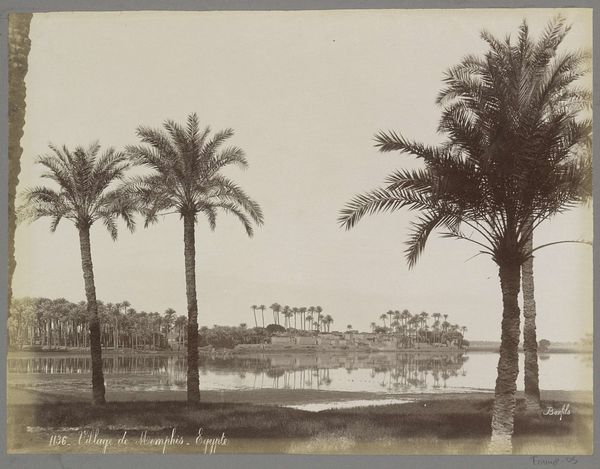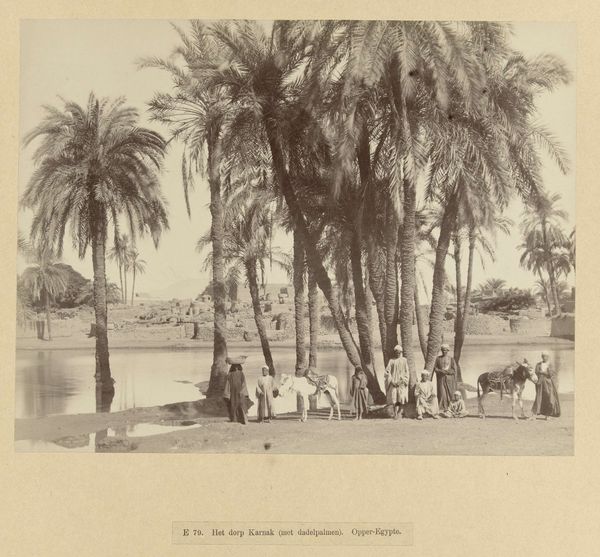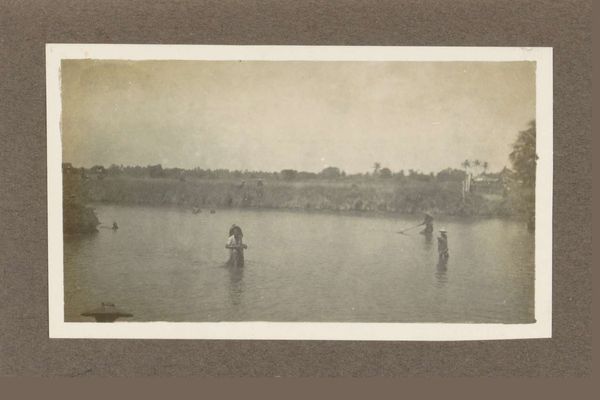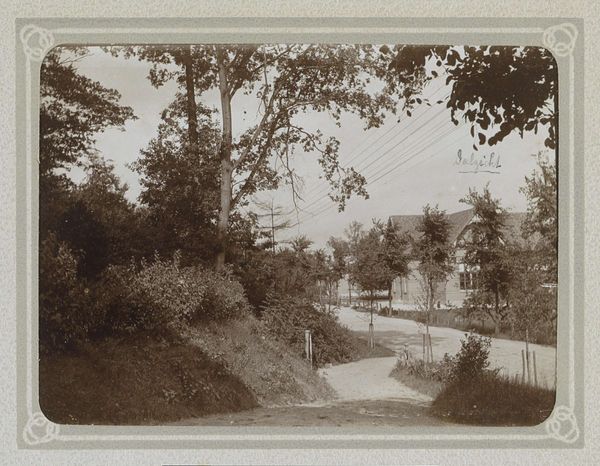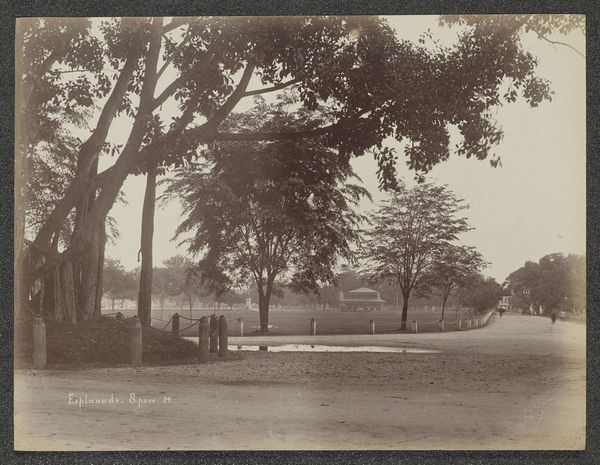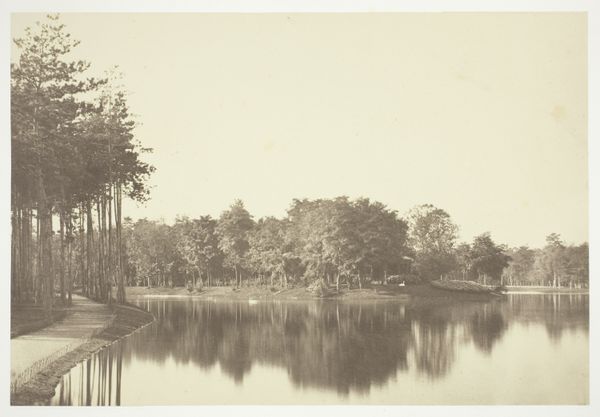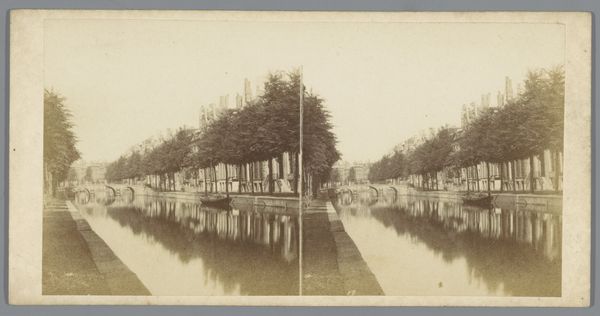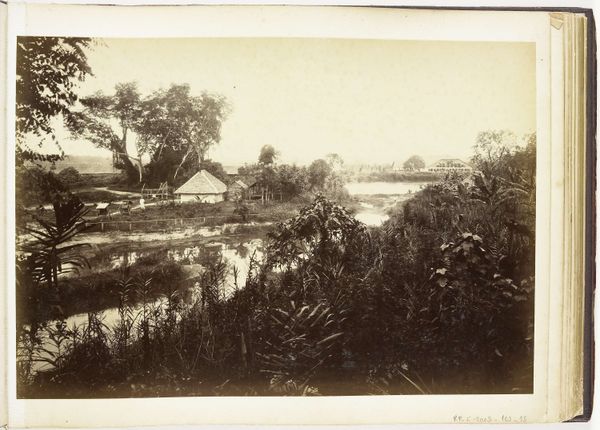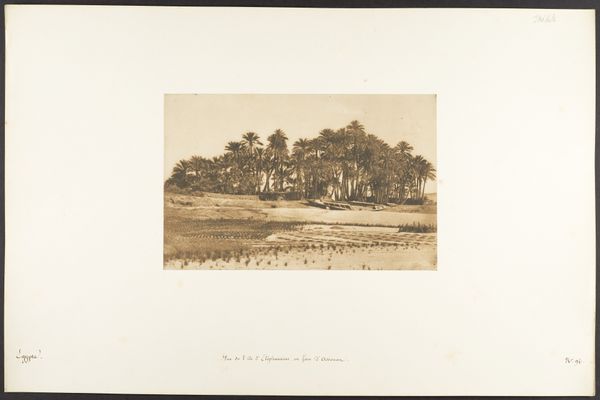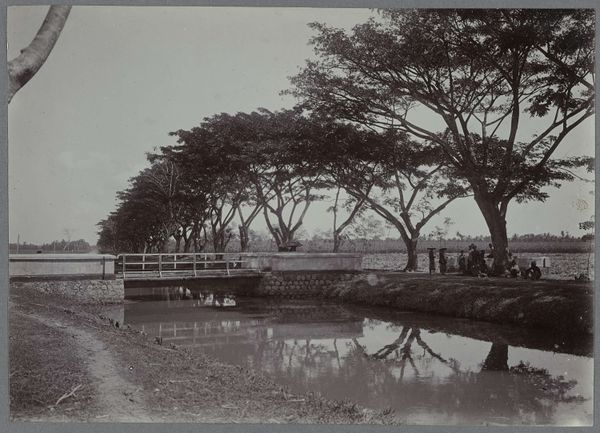
photography, albumen-print
#
landscape
#
ancient-egyptian-art
#
photography
#
ancient-mediterranean
#
orientalism
#
albumen-print
Dimensions: height 212 mm, width 270 mm, height 570 mm, width 463 mm
Copyright: Rijks Museum: Open Domain
Editor: This albumen print, "Rivier de Nijl treedt buiten zijn oevers" or "The Nile River Overflowing" was created sometime between 1890 and 1910. It's an anonymous work, showcasing a serene landscape of a flooded Nile with a pyramid in the background. I’m struck by the image’s ability to evoke both the monumentality of ancient Egypt and the powerful force of nature. What's your take on this, particularly focusing on its production? Curator: It's fascinating to consider this photograph through a materialist lens. The albumen print process itself is key: think of the labor involved in producing albumen from egg whites, coating the paper, and the specific chemical reactions creating this sepia tone. How does this particular method of production affect our understanding of the depicted scene? Editor: Well, it gives it a timeless, almost ethereal quality. It feels less like a news photo documenting a flood and more like a romanticized vision of Egypt, playing into Orientalist tropes. Does the labor invested also highlight social and economic dynamics of the era? Curator: Exactly! The industrialization required for the large-scale production and consumption of images like these points to the economic forces at play. Think about the photographers catering to European tourists wanting to capture "exotic" views. And what of the local populations impacted by the annual flooding and by this image production? Whose labor *isn't* visible here? Editor: I see your point. The image romanticizes, maybe even obscures, the lived experiences of Egyptians. So, by considering the albumen print process and its socioeconomic context, we can decode this “landscape” not just as a pretty view, but also a product of complex power dynamics and consumption. Curator: Precisely. Understanding the materials, the production methods, and their place within the broader historical and social landscape enriches our appreciation and understanding significantly. Editor: This has definitely given me a new perspective on analyzing photographic art. Thanks!
Comments
No comments
Be the first to comment and join the conversation on the ultimate creative platform.
